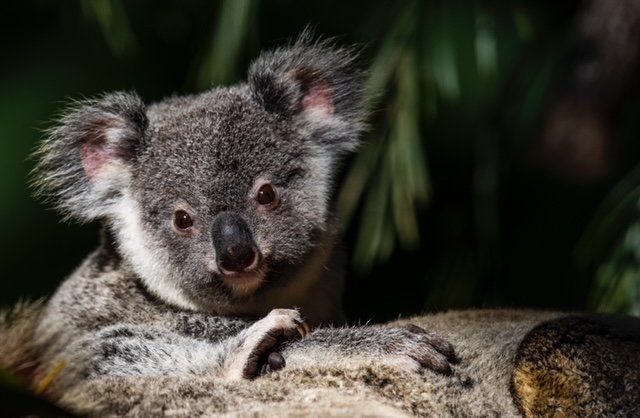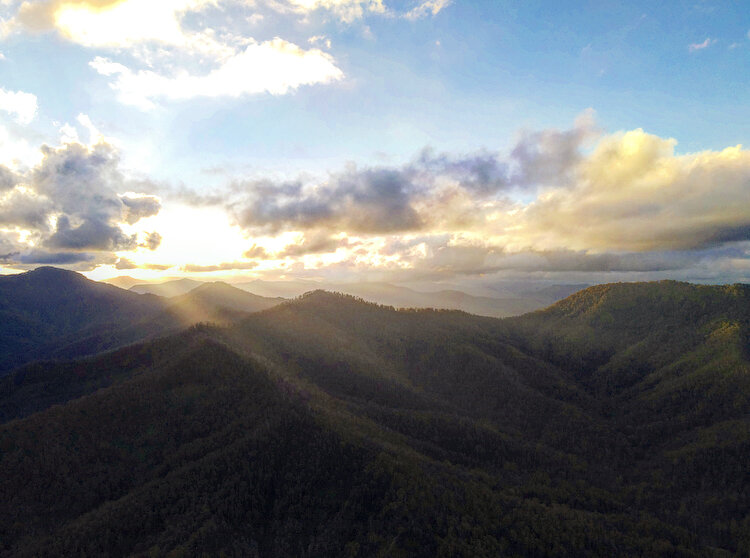
Everything you need to know about the Great Koala National Park
The Great Koala National Park would be the world’s first national park dedicated to protecting the world’s favourite animal.
Video credit: International conservation photojournalist Paul Hilton and photographer Calumn Hockey.
It’s a grand vision to add 175,000 hectares of publicly owned forests that are currently being unsustainably logged, to existing protected areas to form a 315,000 hectare reserve in the Coffs Harbour hinterland.
We know it will make a huge difference for koalas because environment groups, koala carers and government scientists have all identified these forests as being excellent koala habitat. The first step to protecting any species is protecting its habitat, and this is exactly what the GKNP will do.
What is being proposed and where?
The GKNP would protect a total of 315,000 hectares of koala habitat on public lands. 140,000 hectares is already protected as conservation reserves, while the remaining 175,000 hectares are currently classified as State Forest. The State Forests are a critical part of the proposal, containing much of the best koala habitat in the region.
NSW government mapping of koala habitat confirms the GKNP proposal would protect the most important koala habitat in the region. The GKNP proposal would protect koala habitat in five local government areas: Clarence Valley, Coffs Harbour City, Bellingen Shire, Nambucca Valley and Kempsey Shire Councils and does not include any plantation forest or private land.
A gateway visitor centre is proposed south of Coffs Harbour on the Pacific Highway adjacent to Bongil Bongil National Park. It will provide visitor information, Gumbaynggirr Cultural information, a café, educational space and a koala hospital. The centre will be the launch point for various park activities including koala spotting tours, Indigenous Cultural tours and trail hiking.
Why do we need it?
Koalas are the only living member of the phascolarctidae family, which makes them totally unique on this planet. The problem is, they thrive in the coastal forests often chosen for logging, agriculture and housing development.
Their numbers are dwindling fast. They dropped by a third between 1990 and 2010 and on top of this, it’s estimated that the 2019-20 bushfires killed over 70% of the remaining koalas on the North Coast. They are now officially endangered.
And National Parks aren’t enough. Most NSW koalas actually live outside of protected areas like National Parks. This is because our National Parks are mostly made up of higher, less fertile country instead of the lush coastal forests that koalas need to thrive. The Great Koala National Park would link some of these key coastal forests with existing National Parks so that koalas can access the food they need, as well as move freely in response to extreme weather events.
The Great Koala National Park would protect prime koala habitat – putting a stop to logging in the park, restoring forests and linking lowland coastal forests to higher escarpment forests so koalas (and other animals) can roam freely and rebuild their numbers.
Sounds expensive. How much would the park cost?
Actually, it’s very cos-effective and could have economic benefits for the region.
Because the proposed forest areas are already publicly-owned, this is a cheap option. In comparison, to buy this sized area of private farmland would cost between $1.2 and $2.5 billion[1]. So the Great Koala National Park would give us maximum koala habitat for the minimum cost!
[1] This estimate is based on the 2020 Rural Bank report of Australian Farmland Values (https://www.ruralbank.com.au/knowledge-and-insights/publications/farmland-values/new-south-wales-2020/#DownloadReport). The lower figure is derived by multiplying the price of farmland per hectare in Kempsey ($7,119) by 175,000 (the area of publicly owned state forests in the GKNP proposal) and the upper figure by multiplying the price of farmland per hectare in Coffs Harbour ($14,250) by 175,000.
Are there other economic benefits?
Yes! Destination NSW figures show that nature-based tourism earned NSW almost $20 billion in 2017! It’s a massive industry, and the Great Koala National Park would ensure that the Coffs Coast is well placed to get a piece of the action.
Are there any other benefits to the park?
Yes! It’s not just about koalas.
Many other threatened and endangered species would also be protected including old growth and hollow dependent species such as yellow-bellied gliders, greatergliders, powerful owls, sooty owls, masked owls, barking owls and glossy black cockatoos. The GKNP area is a recognised biodiversity hotspot and includes outstanding forest ecosystems from coast to hinterland including World Heritage listed Gondwana Rainforests and other unique tall eucalypt forests, assessed as having World Heritage value but not yet listed.
Could humans use the park too?
Of course! A concept plan has been created for a world-class walking track that explores the exciting potential the GKNP would offer for local recreational activities and domestic and international tourism.
Download: Horseshoe Trail Proposal
Download: Biking the in the park
Download: Long Distance Walking Track







